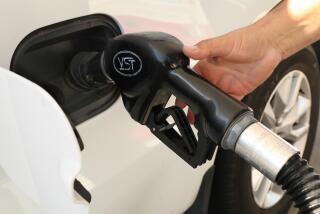More, More, Then Some More
- Share via
Even as oil consumption in the United States continues its steady disturbing rise, Congress--with a wink from the White House--is encouraging Americans to consume more, more, more. The incentive comes in the proposed lifting of the 4.3-cent-a-gallon gasoline surtax enacted in 1993 to reduce the federal deficit. The ostensible reason for repealing that tax is to partially compensate motorists for the higher pump prices they have been paying all spring. The real reason is to play to the voters in an election year. That this is in good part a bipartisan effort, with President Clinton signaling his readiness to go along, does not lessen its mischievousness.
The House has overwhelmingly voted to suspend the surtax until the end of this year, which would cost the Treasury $1.7 billion. A measure to eliminate the tax permanently could be considered later. The Senate plans to consider the suspension in a few weeks, with Democrats vowing it will be taken up only if Republicans agree to a vote raising the minimum wage. That deal probably will be struck.
The rationale for the surtax repeal, never convincing in the first place, is now swiftly eroding. Pump prices are falling, and the U.S. Energy Department expects a further decline of 2 to 6 cents a gallon in coming weeks. Moreover, Democrats in the House were unable to attach to its repeal measure a mandate that the full tax savings go to consumers. There’s thus no assurance that oil producers or refiners or individual dealers won’t keep their prices steady and pocket the intended savings.
Is this proposed tax cut really necessary? We’ve noted before that even with recent increases, gasoline prices, adjusted for inflation, are close to a historical low. That is further evidence that it’s not sound economic policy that drives the gasoline tax cut effort. It’s undisguised political pandering.






